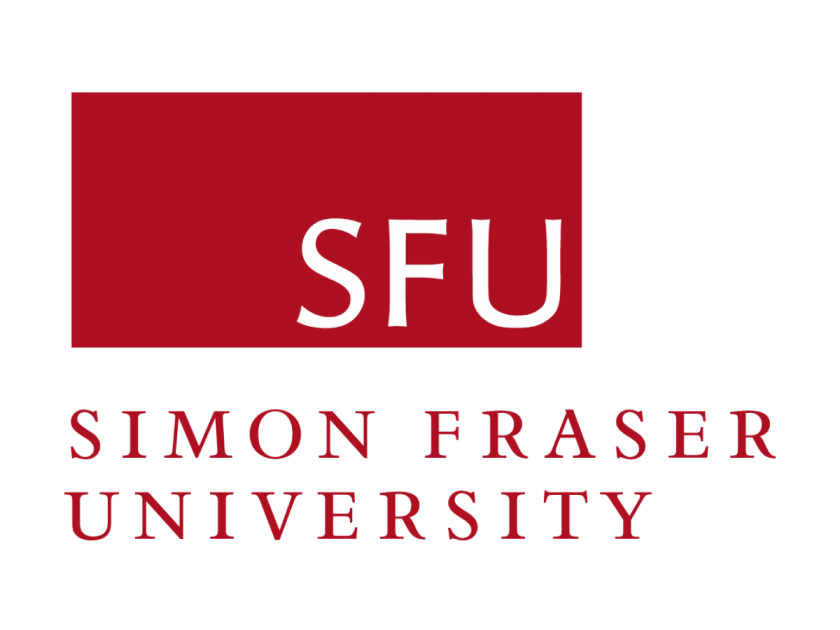Visual Communication: Exploring Representations of Vietnamese Culture in Advertising
DOI:
https://doi.org/10.54855/ictep.2337Keywords:
Visual communication; Vietnamese cultural values; Cultural studies; Intercultural communication; IMIVI frameworkAbstract
Visual communication has received much attention from studies in the field of foreign language education. In the Vietnamese context, however, little research has been conducted to explore the meanings of Vietnamese cultural aspects in visual advertising. To fill such a gap, this article investigated visual meanings of Vietnamese cultural values represented in visual elements of common advertising in the Vietnamese market. The data were firstly selected from various logos and images of popular brands in the Vietnamese market and then interpreted based on the Iceberg Model for Interpreting Vietnamese Images (IMIVI framework) (Huynh, 2022). The results revealed the selected advertisements carried core Vietnamese cultural values in terms of visible and invisible elements. Specifically, culturally specific images such as flowers, animals, and traditional clothing were identified as visible factors. Buddhist, Confucian, and Taoist values were found as invisible factors in selected images of popular advertisements in the Vietnamese context. Findings reported this article might be helpful for research in visual communication, multimodality, and foreign language education. The outcomes of this article are also interesting for cultural studies, especially for the roles of culture in commercial advertising, intercultural communication, and foreign language education.
References
Abokhoza, R., Mohamed, S. H., & Narula, S. (2019). How Advertising Reflects Culture and Values: A Qualitative Analysis Study. Journal of Content, Community and Communication, 10(9), 114 -122.
An, B. (September 6, 2016). Điều gì ẩn chứa bên trong bông sen vàng 6 cánh của Vietnam Airlines? Tiền Phong. Retrieved from https://tienphong.vn/dieu-gi-an-chua-trong-bong-sen-vang-6-canh-cua-vietnam-airlines-post899063.tpo#:~:text=Hoa%20Sen%20bi%E1%BB%83u%20hi%E1%BB%87n%20cho,bi%E1%BB%83u%20t%C6%B0%E1%BB%A3ng%20m%E1%BB%9Bi%20c%E1%BB%A7a%20m%C3%ACnh
Anh, P. H. M., & Lee, Y. S. (2008). A study on the classifications and symbolic meanings of Vietnamese traditional patterns. International Journal of Human Ecology, 9(1), 29-40.
Anh, P. P., & Tin, N. T. (2021). The Meaning Of The Lotus's Symbol In Bubbhist Philosophy For VietNam Now. Turkish Journal of Computer and Mathematics Education (TURCOMAT), 12(13), 6794-6807.
Berger, A. A. (2000). The Meanings of Culture: Culture: Its Many Meanings. M/C Journal, 3(2). https://doi.org/10.5204/mcj.1833
Byram, M. (1997). Teaching and assessing intercultural communicative competence. Multilingual Matters.
Cao, T., Nguyen, H. T., Nguyen, H. M., & Hoshino, Y. (2014). Modeling Emotional Evaluation of Traditional Vietnamese Aodai Clothes Based on Computer Vision and Machine Learning. In Industrial Applications of Affective Engineering (pp. 111-122). Springer, Cham.
Cindy (February 21, 2022). Chinese Lion Dances: What Is It and What Does It Symbolize? China Highlights. Retrieved from https://www.chinahighlights.com/travelguide/special-report/chinese-new-year/new-year-lion-dance.htm#meaning
Cleary, J. C. (1991). Buddhism and popular religion in medieval Vietnam. Journal of the American Academy of Religion, 59(1), 93-118.
Czarnecka, B., Brennan, R., & Keles, S. (2018). Cultural meaning, advertising, and national culture: A four-country study. Journal of Global Marketing, 31(1), 4-17.
Dan, M. (2020). Culture as a multi-Level and multi-layer construct. Revista de Management Comparat International, 21(2), 226-240.
Dao, M. (March 01,2021). A family meal: eating culture of Vietnamese. Hanoi Times. http://hanoitimes.vn/a-family-meal-eating-culture-of-vietnamese-316402.html
Emery, C., & Tian, K. R. (2010). China compared with the US: Cultural differences and the impacts on advertising appeals. International Journal of China Marketing, 1(1), 45-59.
Granatta, P. (2016). Culture as mediatization: Edward T. Hall's Ecological Approach. InMediaciones de la Comunicación, 11, 57-70.
Goldstein, J. (n.d). Cause and Effect. Tricycle. https://tricycle.org/magazine/cause-and-effect/
Hall, E. T. (1976). Beyond culture. Anchor Press.
Hoa, T. T. P. (2021). Making the Vietnamese áo dài tunic national heritage: fashion travel through tradition, colonialism, modernity. International Journal of Heritage Studies, 27(8), 806-818.
Hofstede, G., Hofstede, G. J., & Minkov, M. (2005). Cultures and organizations: Software of the mind (Vol. 2). New York: Mcgraw-hill.
Huynh, N. T., Thomas, A., & To, V. T. (2020). East-Asian Philosophical Concepts as Analytical Framework for Interpreting Non-Western Images in Children's Picturebooks. In Handbook of research on cultivating literacy in diverse and multilingual classrooms (pp. 393-420). IGI Global.
Huynh, N. T., Thomas, A., & To, V. T. (2021). Visual meanings in Vietnamese picture books: exploring Vietnamese artists' perspectives on the Yin–Yang balancing. Social Semiotics, 1-26. https://doi.org/10.1080/10350330.2021.1969214
Huynh, N. T (2022). Representations of Vietnamese culture in children's picturebooks (Doctoral dissertation, University of Tasmania). Retrieved from: https://eprints.utas.edu.au/47548/
Johnson, S. (October 27, 2021). What's Filial Piety? Why Is It Important Today? Join Cake. Retrieved from: https://www.joincake.com/blog/filial-piety/
Le, H. T. (2022). Students’ attitudes towards teacher’s use of Vietnamese in EFL classrooms at Vietnam National University Hanoi, International School. International Journal of TESOL & Education, 2(5), 20–33. https://doi.org/10.54855/ijte.22253
Lee, W. N. (2019). Exploring the role of culture in advertising: Resolving persistent issues and responding to changes. Journal of Advertising, 48(1), 115-125.
Lewis, C., & Symank, C. (2008). The Mother Daughter Legacy: How a Mother's Love Shapes a Daughter's Life. Gospel Light Publications.
Lin, C. A. (2001). Cultural values reflected in Chinese and American television advertising. Journal of advertising, 30(4), 83-94.
Lückmann, P., & Färber, K. (2016). The impact of cultural differences on project stakeholder engagement: A review of case study research in international project management. Procedia Computer Science, 100, 85-94.
McCracken, G. (1986). Culture and consumption: A theoretical account of the structure and movement of the cultural meaning of consumer goods. Journal of consumer research, 13(1), 71-84.
Makhmudov, K. (2020). Ways of forming intercultural communication in foreign language teaching. Science and Education, 1(4), 84 -89.
Ngo, T. C. T., & Ha, Y. N. (2022). The integration of English conversation rooms and chatting to enhance English communication skills for EFL students: at Van Lang University during the COVID-19 pandemic. International Journal of TESOL & Education, 2(5), 34–63. https://doi.org/10.54855/ijte.22254
Pakditawan, S. (December 9, 2017). Purity, rebirth and eternity: The Lotus flower has deep symbolic meaning. The Phuket News. Retrieved from https://www.thephuketnews.com/purity-rebirth-and-eternity-the-lotus-flower-has-deep-symbolic-meaning-65029.php
Pham, N. T. L. (2021). American English and Vietnamese Use in Public Signs: A Pragmatic Cultural Comparison and Translation. International Journal of TESOL & Education, 1(3), 14–36. Retrieved from https://i-jte.org/index.php/journal/article/view/79
Pike, M. (May 3, 2018). Lotus: 11 Facts About Vietnam's National Flower. The Culture Trip. https://theculturetrip.com/asia/vietnam/articles/lotus-11-facts-about-vietnams-national-flower/
Pratap, A. (January 26, 2021). Importance of Culture in Marketing. Notesmatic. https://notesmatic.com/importance-of-culture-in-marketing/
Sam, N. (n.d). Mother Love. Psychology Dictionary. https://psychologydictionary.org/mother-love/#:~:text=By,their%20offspring%20at%20all%20costs.%22
Si, L. W., & Couto, U. (2020). Food, culture, and food tourism. In Food and Society (pp. 323-339). Academic Press.
Singh, N., & Matsuo, H. (2004). Measuring cultural adaptation on the Web: a content analytic study of US and Japanese Web sites. Journal of Business Research, 57(8), 864-872.
Soomro, S., Kazemian, B., & Mahar, I. (2015). The importance of culture in second and foreign language learning. Dinamika Ilmu: Journal of Education, 15(1), 1-10.
Thinh, N. D. (2009). Len Dong-spirit journeys in contemporary urban Vietnam. International Journal of Intangible Heritage, 4, 79-91
Traditional Vietnamese Family Meal – What They Eat and Table Etiquettes (April 16, 2018). Vietnam Culinary. Retrieved from https://culinaryvietnam.com/2018/04/traditional-vietnamese-family-meal-eat-table-etiquettes/
Trần, H. Y. (December 18, 2019). Hoa sen là quốc hoa của nước nào? Dienhoahcm. https://dienhoahcm.com/2019/12/hoa-sen-la-quoc-hoa-cua-nuoc-nao/
Tran, R. (February 18, 2020). Vietnamese Traditional Family Values. Viet Nam Discovery. https://vietnamdiscovery.com/culture-arts/vietnamese-traditional-family-values/
Trickett, E. J., & Jones, C. J. (2007). Adolescent culture brokering and family functioning: a study of families from Vietnam. Cultural Diversity and Ethnic Minority Psychology, 13(2), 143.
Van, V. H. (2020). Determine The Appearance And The Value System Of The Traditional Culture Of Vietnam Through The Worship Of Ancestors Belief Of Vietnamese People. Psychology And Education, 57(9), 621 - 630.
Weaver, G. R. (1993). Understanding and coping with cross-cultural adjustment stress. Education for the Intercultural Experience, 2, 137-167.
Woodford, N. (November 01, 2018). The importance of culture in advertising. Unruly. https://unruly.co/blog/article/2018/11/01/the-importance-of-culture-in-advertising/
Yellow apricot blossom – a symbol of Tet in Viet Nam (February 04, 2022). Da Nang Today. https://baodanang.vn/english/culture-sport/202202/yellow-apricot-blossom-a-symbol-of-tet-in-viet-nam-3902517/
Downloads
Published
How to Cite
Issue
Section
License
Copyright (c) 2023 Luong Thi Bich Tuyen, Huynh Ngoc Tai, Nguyen Thi Tuyet Nhung

This work is licensed under a Creative Commons Attribution 4.0 International License.
Authors retain copyright and grant the picte the right of first publication with the work simultaneously licensed under a Creative Commons Attribution 4.0 International License that allows others to share the work with an acknowledgment of the work's authorship and initial publication in this journal.
Authors are able to enter into separate, additional contractual arrangements for the non-exclusive distribution of the proceedings' published version of the work (e.g., post it to an institutional repository, in a journal, or publish it in a book), with an acknowledgment of its initial publication in this proceedings.
Authors are permitted and encouraged to post their work online (e.g., in institutional repositories or on their website) prior to and during the submission process.










